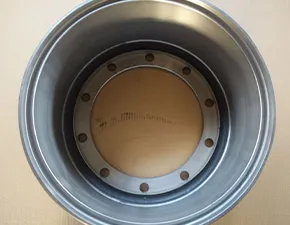
-
 Afrikaans
Afrikaans -
 Albanian
Albanian -
 Amharic
Amharic -
 Arabic
Arabic -
 Armenian
Armenian -
 Azerbaijani
Azerbaijani -
 Basque
Basque -
 Belarusian
Belarusian -
 Bengali
Bengali -
 Bosnian
Bosnian -
 Bulgarian
Bulgarian -
 Catalan
Catalan -
 Cebuano
Cebuano -
 Corsican
Corsican -
 Croatian
Croatian -
 Czech
Czech -
 Danish
Danish -
 Dutch
Dutch -
 Saesneg
Saesneg -
 Esperanto
Esperanto -
 Estonian
Estonian -
 Finnish
Finnish -
 French
French -
 Frisian
Frisian -
 Galician
Galician -
 Georgian
Georgian -
 German
German -
 Greek
Greek -
 Gujarati
Gujarati -
 Haitian Creole
Haitian Creole -
 hausa
hausa -
 hawaiian
hawaiian -
 Hebrew
Hebrew -
 Hindi
Hindi -
 Miao
Miao -
 Hungarian
Hungarian -
 Icelandic
Icelandic -
 igbo
igbo -
 Indonesian
Indonesian -
 irish
irish -
 Italian
Italian -
 Japanese
Japanese -
 Javanese
Javanese -
 Kannada
Kannada -
 kazakh
kazakh -
 Khmer
Khmer -
 Rwandese
Rwandese -
 Korean
Korean -
 Kurdish
Kurdish -
 Kyrgyz
Kyrgyz -
 Lao
Lao -
 Latin
Latin -
 Latvian
Latvian -
 Lithuanian
Lithuanian -
 Luxembourgish
Luxembourgish -
 Macedonian
Macedonian -
 Malgashi
Malgashi -
 Malay
Malay -
 Malayalam
Malayalam -
 Maltese
Maltese -
 Maori
Maori -
 Marathi
Marathi -
 Mongolian
Mongolian -
 Myanmar
Myanmar -
 Nepali
Nepali -
 Norwegian
Norwegian -
 Norwegian
Norwegian -
 Occitan
Occitan -
 Pashto
Pashto -
 Persian
Persian -
 Polish
Polish -
 Portuguese
Portuguese -
 Punjabi
Punjabi -
 Romanian
Romanian -
 Russian
Russian -
 Samoan
Samoan -
 Scottish Gaelic
Scottish Gaelic -
 Serbian
Serbian -
 Sesotho
Sesotho -
 Shona
Shona -
 Sindhi
Sindhi -
 Sinhala
Sinhala -
 Slovak
Slovak -
 Slovenian
Slovenian -
 Somali
Somali -
 Spanish
Spanish -
 Sundanese
Sundanese -
 Swahili
Swahili -
 Swedish
Swedish -
 Tagalog
Tagalog -
 Tajik
Tajik -
 Tamil
Tamil -
 Tatar
Tatar -
 Telugu
Telugu -
 Thai
Thai -
 Turkish
Turkish -
 Turkmen
Turkmen -
 Ukrainian
Ukrainian -
 Urdu
Urdu -
 Uighur
Uighur -
 Uzbek
Uzbek -
 Vietnamese
Vietnamese -
 Welsh
Welsh -
 Bantu
Bantu -
 Yiddish
Yiddish -
 Yoruba
Yoruba -
 Zulu
Zulu
what are drum brakes made of
What Are Drum Brakes Made Of?
Drum brakes are a crucial component of modern vehicular braking systems, playing an integral role in ensuring safe and effective stopping power. Found in numerous vehicles, particularly those with rear-wheel drive, drum brakes have a unique design that offers several advantages. Understanding what drum brakes are made of can provide insights into their functionality, durability, and performance.
At the heart of a drum brake system is the brake drum, typically made from cast iron or aluminum. Cast iron is popular due to its high strength and excellent thermal conductivity. This means that it can efficiently dissipate heat generated during braking, which is vital for maintaining performance and preventing brake fade. Aluminum, while lighter than cast iron, is often used in performance applications due to its weight savings, which can contribute to improved overall vehicle efficiency.
What Are Drum Brakes Made Of?
The backing plate of the brake shoes is typically made of steel. This steel backing provides structural integrity and supports the friction material. It must resist deformation under the stress of braking while also being lightweight enough to avoid adding unnecessary weight to the vehicle. The steel backing is often coated with a corrosion-resistant material to extend its lifespan, given that moisture and road salt can cause premature wear and failure.
what are drum brakes made of

Another critical component of drum brakes is the wheel cylinder, which is usually made from steel or aluminum. The wheel cylinder houses pistons that push the brake shoes outward against the drum when the brakes are applied. This hydraulic mechanism is vital for translating the driver’s input through the brake pedal into effective braking force. The choice of material for the wheel cylinder often depends on factors like cost, weight considerations, and the specific performance requirements of the braking system.
In addition to the primary components mentioned, various hardware such as springs, retainers, and adjusters are also integral to the drum brake system. These components are typically made from high-strength steel to withstand the repeated stress of braking and ensure the proper operation of the brakes. Special coatings or treatments may be applied to these pieces to prevent corrosion and enhance durability.
The operations of drum brakes are driven by hydraulic force, which relies on the brake fluid’s properties. The brake fluid is typically a glycol-based fluid that provides stable performance across a wide range of temperatures and environmental conditions. This fluid needs to be non-compressible and resistant to moisture absorption to maintain brake effectiveness.
In summary, drum brakes are composed of several key materials including cast iron or aluminum for the drum, steel for the backing plates, and various compounds for the friction material that lines the brake shoes. The combination of these materials is essential for the performance and safety of the braking system. As advancements in materials science continue to evolve, the components of drum brakes may see enhancements that improve their efficiency, longevity, and overall effectiveness. Understanding what drum brakes are made of helps highlight the complexity and importance of these critical automotive components in enhancing vehicle safety.
-
The Ultimate Guide to Semi Trailer Brake Drums for SaleNewyddionApr.27,2025
-
The Importance of Brake Drum and Rotor Pullers in Brake Drum ManufacturingNewyddionApr.27,2025
-
The Best Semi Brake Drums for SaleNewyddionApr.27,2025
-
Quality Truck Brake Drums for SaleNewyddionApr.27,2025
-
Discover the Best Brake Drums for Sale at HEBEI NINGCHAI MACHINERY CO., LTD.NewyddionApr.27,2025
-
Discover Quality Brake Drums for SaleNewyddionApr.27,2025
-
Understanding Drum Brake Maintenance and Conversion CostsNewyddionApr.03,2025
